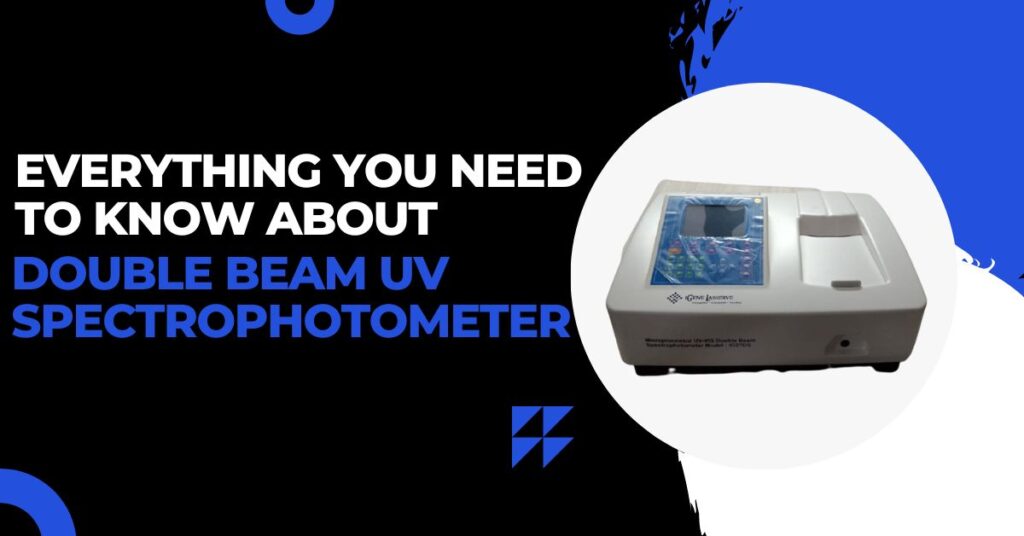The UV double-beam spectrophotometer is made to improve performance, usability, and data compliance. For all kinds of activities, including everyday analysis and research, it is the perfect workhorse UV spectrophotometer. Let’s share some detailed descriptions of this equipment.
What Is A Double Beam UV-Visible Spectrophotometer?
The functioning of a double beam spectrophotometer and a double beam UV visible spectrophotometer is fairly similar. The light beam from the light source is divided into two beams in this double UV spectrophotometer. The monochromator, which also exists and chooses the wavelength of light traveling through the samples, functions similarly to a double beam spectrophotometer. A greater molecular concentration in the solution will result in more light being absorbed by the specimens. To avoid unsatisfactory and inaccurate findings, it is frequently observed that samples presented for the spectroscopic examination should be completely pure.
Typical components of a double beam UV-visible spectrophotometer include:
- A lamp is a common example of a light or energy source.
- An accessory for choosing the light’s wavelength, such as a filter or monochromator.
- A location where cuvettes might be used to read measurements
The detectors to obtain enough data from the spectroscopic analysis. It might also be a phototube or a radiation detector to track changes in light’s wavelength. Additionally, it assists in turning the energy that the double beam UV visible spectrophotometer receives into a detectable signal.
There are two categories of optical conditions in the configuration of a double beam UV visible spectrophotometer:
- Single Beam Spectrophotometer
It only emits one beam of light at a time. The white light that emanates from the spectrophotometer’s discs is the source of light in this situation.
- Two-Beam Spectrophotometer
For diffraction, a single light beam is divided into two beams. By choosing certain light wavelengths for the spectrometry procedure, the monochromator fulfills its function in this case.
Some of the main working principles are as follows:
- Ray Dispersion In Light
In nature, just following a rain, light ray dispersion may be observed. By generating a rainbow of colors, the droplets distort the sun’s light beams. The rainbow in this case refers to the spectrum.
- Absorption
Ordinarily, the term “absorbance” refers to the spectrophotometric measurement of the ratio of incoming light to radiant light rays passing through a biological sample.
- Rays of Light Scattering In The Visible Spectrum
When white light travels through the sample and is reflected by a colored material, a part of the mixed wavelengths is absorbed in the spectrophotometric examination in a double beam UV/VIS apparatus.
Understanding the working principle of the Double Beam UV spectrophotometer can give a lot of ideas about the equipment. However, finding a suitable one for your lab is a challenge. Connect with IGene Labserve by visiting our website at https://www.igenels.com or contact 09310696848 for more information.

